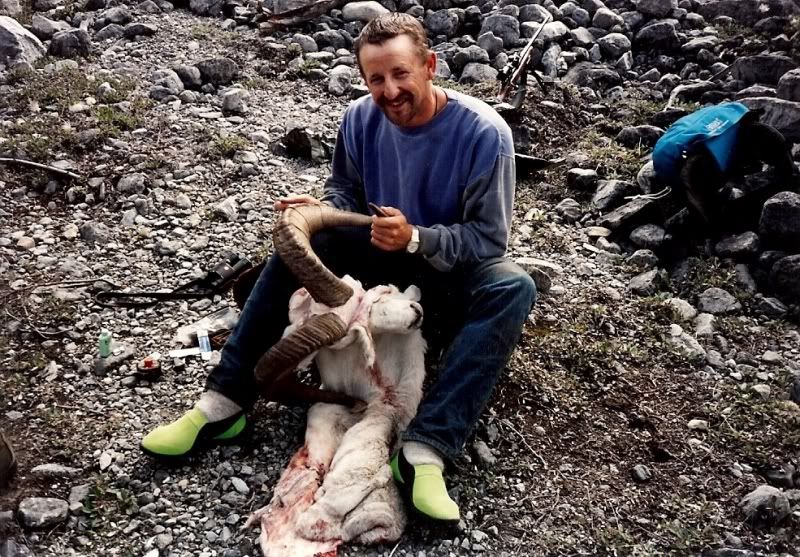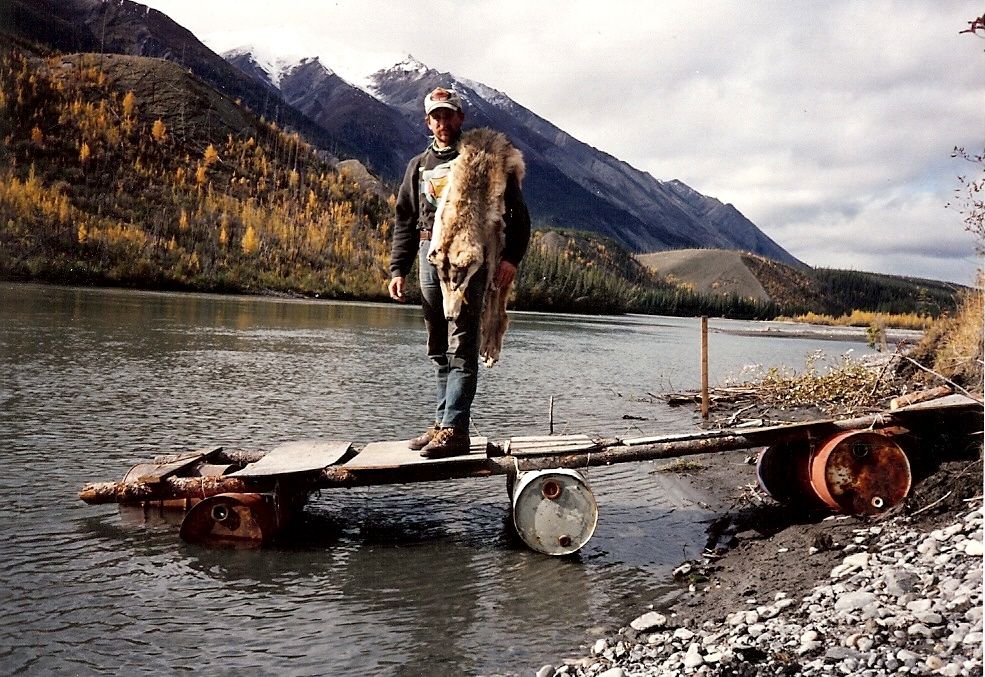Just throwing this out there to see if anyone has any suggestions for the best way to keep a hide in good shape while hunting the back country. I shot a yote last year first day up there, I skinned him out and just balled it up and we packed it out but it was 8 days later. By the time I got it to the taxidermist to get it tanned, he told me it wasn't worth dicking with since it hadn't been fleshed etc. sooner. I will not have a fur stretcher, I guess I can fashion something out of shit I find on the mountain? I would like to keep what I shoot and be able to take care of it out there and get it back to taxidermist in decent shape. Your thoughts, experience here would be appreciated.
Join the Hide community
Get access to live stream, lessons, the post exchange, and chat with other snipers.
Register
Download Gravity Ballistics
Get help to accurately calculate and scope your sniper rifle using real shooting data.

Install the app
How to install the app on iOS
Follow along with the video below to see how to install our site as a web app on your home screen.
Note: This feature may not be available in some browsers.
You are using an out of date browser. It may not display this or other websites correctly.
You should upgrade or use an alternative browser.
You should upgrade or use an alternative browser.
Hunting & Fishing Pelt care in back country
- Thread starter hognuts
- Start date
1. flesh the hide
2. Salt
3.repeat after a day or 2 as the salt will cure any flesh you miss
3. keep cool (if you can) and dry.
Ive kept hides in good shape this way for a week , think 12 days was the longest , got weathered in plane couldn't make it.
2. Salt
3.repeat after a day or 2 as the salt will cure any flesh you miss
3. keep cool (if you can) and dry.
Ive kept hides in good shape this way for a week , think 12 days was the longest , got weathered in plane couldn't make it.
Don't stretch and dry it in the backcountry, do as stated above with salt and you'll get a nice hide out of it. Don't store it in a plastic bag or it will slip on you. A canvas or nylon breathable game quarters bag will work for storage.
Don't stretch and dry it in the backcountry, do as stated above with salt and you'll get a nice hide out of it. Don't store it in a plastic bag or it will slip on you. A canvas or nylon breathable game quarters bag will work for storage.
So skin it , flesh it, salt it a few times in a breathable " game bag". Should it be stored fur out or leather side out?
After fleshing as much as you can get, Salt it leather side out with skin layed out flat for one day.
Second day you want to dispose of used salt, then resalt and roll up with fur out and store in game bag. Should be good for a week or more if kept in a cool dark place.
Second day you want to dispose of used salt, then resalt and roll up with fur out and store in game bag. Should be good for a week or more if kept in a cool dark place.
The only thing I would add is if it is a lighter colored hide (like sheep) and you have a stream nearby, if you get blood on it I would wash it before salting. If you send it with blood on it you will get it back with set blood on it.So skin it , flesh it, salt it a few times in a breathable " game bag". Should it be stored fur out or leather side out?
Thank you all for the replies. My " google- foo " was drawing a blank on this one. I remember when I was growing up in the black hills in SD it was my brother and I's chore to flesh the yotes before the fur buyer would come to town. We just used a spoon when it was on the fur stretcher and my dad just let them air dry on stretcher. Any other suggestions for tool for. " field fleshing" without a board behind it ?
Try to skin it clean if you have the time, don't worry about fleshing it completely. Get as much meat and fat as you can off then after the first day of salting what you missed will come off easier. Fleshing in backcountry will be a pain in the ass, a sharp knife and patience on a smooth hard surface.
I've done it many, many times when I used to guide backpack Dall sheep hunts up north in July, and August. Capes will need to be fleshed, ears turned, and lips, eyes, and noses split to let the salt get in and draw out the moisture. Time consuming, but a must if you want to be sure everything will be preserved for the tannery. The frist day or so, the salt will become almost wet and saturated with fluid. Remove it, but set it aside to dry, and it can be used again. When you remove the first dose of salt, apply another layer for a day or two longer. Depending on what critter you're working with, repeat those steps until the flesh side becomes somewhat stiff and leathery. Roll it up, and put it in a breathable game bag or feed sack. You'll be good to go. Coyote or wolf hides are pretty thin and will get dry quite a bit faster than deer, elk, bear, or moose capes. Bears can be a really big task this time of year because of all the excessive fat.....you will need to remove ALL fat, or the salt will not penetrate to the hide itself and the hair will slip, or start to loosen up and fall out. Be sure to "work" the salt in the lips eyes,a nd ears with your fingers to insure it gets all the way in...consult your taxidermist to walk you through the "turning process". You're basically doing the same exact thing he does in his shop when he preps a cape, or hide for the tannery.
You'll need about three pounds of salt per cape...bring lots to be sure you don't run out! It's cheap!
Good luck on your hunt! Hope you punch all of your tags!
Pat
You'll need about three pounds of salt per cape...bring lots to be sure you don't run out! It's cheap!
Good luck on your hunt! Hope you punch all of your tags!
Pat

Getting a Dall Sheep cape ready for salt.

Standing on our homemade raft with a wolf pelt that I prepped and dried in salt. We shot a moose, black bear, and this wolf on the other side of this glacier fed river and retrieved all three with this makeshift raft...Ah, the things you do when you're young, dumb, and brave!
God bless ya Pat. Thanks for all the tips guys, hadnt even thought about this, and Im gonna need to know.
I've done it many, many times when I used to guide backpack Dall sheep hunts up north in July, and August. Capes will need to be fleshed, ears turned, and lips, eyes, and noses split to let the salt get in and draw out the moisture. Time consuming, but a must if you want to be sure everything will be preserved for the tannery. The frist day or so, the salt will become almost wet and saturated with fluid. Remove it, but set it aside to dry, and it can be used again. When you remove the first dose of salt, apply another layer for a day or two longer. Depending on what critter you're working with, repeat those steps until the flesh side becomes somewhat stiff and leathery. Roll it up, and put it in a breathable game bag or feed sack. You'll be good to go. Coyote or wolf hides are pretty thin and will get dry quite a bit faster than deer, elk, bear, or moose capes. Bears can be a really big task this time of year because of all the excessive fat.....you will need to remove ALL fat, or the salt will not penetrate to the hide itself and the hair will slip, or start to loosen up and fall out. Be sure to "work" the salt in the lips eyes,a nd ears with your fingers to insure it gets all the way in...consult your taxidermist to walk you through the "turning process". You're basically doing the same exact thing he does in his shop when he preps a cape, or hide for the tannery.
You'll need about three pounds of salt per cape...bring lots to be sure you don't run out! It's cheap!
Good luck on your hunt! Hope you punch all of your tags!
Pat
Yeah, thanks for the help, I shot that yote last year and it was ruined before I got back to civilization and I had no idea how to prep it, I had heard of guys saying to salt it.
When you talk about "slitting the eyes and ears" can you explain that a bit more. Just don't want to "assume" I understand and end up making a mess of things.
I take off on Thursday and fly up there, we get our gear weighed out on Friday and head in on Saturday. We will be there the 13-21st. Opening day is the 15th, so should give us time to set up our base camp the first day, hike up on a ridge and get the Cheytac and secondary camp set up on the 14th overlooking our burn area I have been hearing about and be ready to go on opening day! I haven't been able to sleep for awhile now thinking about it! Good luck to all you guys on your adventures this year!
Similar threads
- Replies
- 71
- Views
- 2K
Rifle Competition Events
Heartbreak Run-n-Gun 2025 AAR
- Replies
- 2
- Views
- 514
- Replies
- 12
- Views
- 1K
